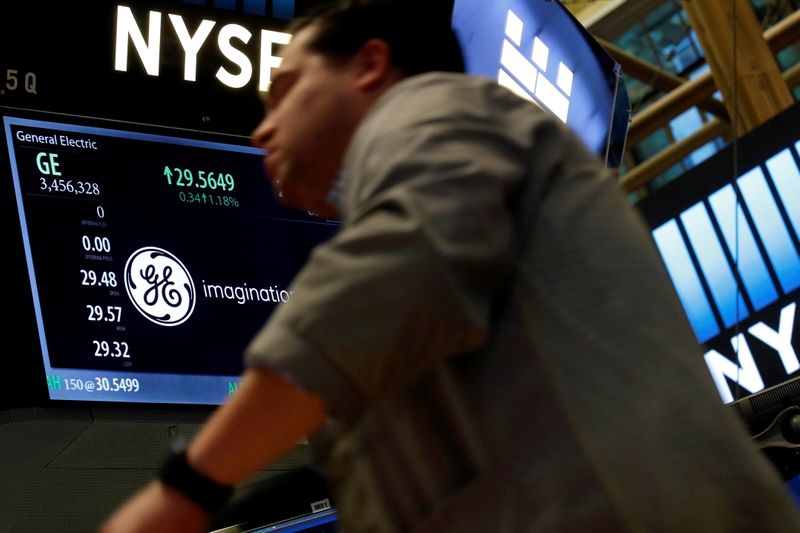Trump/Cook, Nissan weakness, more tariffs and gold - what’s moving markets
(Bloomberg) -- How much further is the Federal Reserve willing to let stocks slide? That’s the burning question of the moment for financial markets, and Greg Jensen, co-chief investment officer at Bridgewater Associates, has an answer: as much as 20% more.
That’d put the S&P 500 below 3,500, or close to where it was before the Covid-19 pandemic began two years ago. The benchmark U.S. index closed Wednesday at 4,350.
The reality, Jensen explained, is policy makers have little reason to halt the selloff that has savaged the most speculative stocks and spurred equity volatility to a 12-month high. On the contrary, inflation in the U.S. is running at the hottest in four decades, labor is scarce and companies are building inventories because of supply-chain threats.
“Some decline in asset prices is not a bad thing from the Fed’s perspective, so they’re going to let it happen,” Jensen, 47, said in an interview over Zoom. “At these levels, it would take a much bigger move to get the ‘Fed put’ into the money. They’re a long way from that.”
He figures it’d take a drop of 15% to 20% to alarm the central bank, and even that would depend on how fast the bottom falls out from under the market. So far, Jensen said, the decline over the past few weeks has been “mostly healthy” because it has “deflated some of the bubbles,” such as cryptocurrencies.
House View
Jensen, who serves as co-CIO with Bridgewater founder Ray Dalio and Bob Prince, represents the house view at the world’s biggest hedge fund, with about $150 billion in assets. And in Bridgewater’s analysis, much of what has been happening lately is simply math: Asset prices were elevated by injections of “excess liquidity.” Now that policy makers are withdrawing that monetary stimulus, “there aren’t enough buyers to make up the difference,” Jensen said.
The result is what he calls a “liquidity hole” affecting both stocks and bonds.
Anyone who expects the Fed to blink, as it did after the last pre-pandemic selloff in late 2018, is misreading the economy, Jensen said. Things were different then. Inflation was below the Fed’s 2% target and big companies were buying back shares instead of adding capacity, stockpiling supplies and raising wages.
Fed Chairman Jay Powell inherited an orthodoxy that dates back to Alan Greenspan. In Jensen’s words:
“Since the 1980s, problems have always been solved by easing. That was true fiscally and monetarily, and the countries that eased more did better than the countries that eased less,” he said. “We’re at a turning point now and things will be much different.”
For the first time since Paul Volcker’s Fed of the early 1980s, inflation has accelerated so fast it’s become a political issue. Powell, speaking to reporters after the Fed’s meeting on Wednesday, acknowledged the central bank may have to jack up borrowing costs faster than the market anticipated to stop prices from spiraling higher.
Jensen doesn’t think the Fed wants the market to crash, just reset to a level where it’s more reflective of cash flows in the “real economy” and no longer a channel for inflationary pressures to build. He expects policy makers will be watching closely to see if lower asset prices have any effect on job creation.
One question Jensen raised is who’ll buy all the bonds that the Fed has been soaking up with quantitative easing. In addition to raising rates in March, policy makers are set to end the asset-purchase program that has inflated the central bank balance sheet by trillions of dollars.
Jensen said he figures the 10-year Treasury yield has to reach 3.5% or even 4% -- up from less than 1.9% today -- before private investors are ready to absorb all the government debt that the Fed has been monetizing.
In that scenario, with Treasury prices set to decline further, bonds fail as a hedge against stocks and the traditional 60/40 balanced portfolio is useless as a diversification tool. Jensen said a 1970s-style “stagflation” playbook is more appropriate, and investors need to increase their commodity holdings, trade out of U.S. stocks in favor of international equities and use breakevens to combat inflation.
“Expecting the environment to feel like it did over the past couple of decades is a big mistake,” he said.
©2022 Bloomberg L.P.
